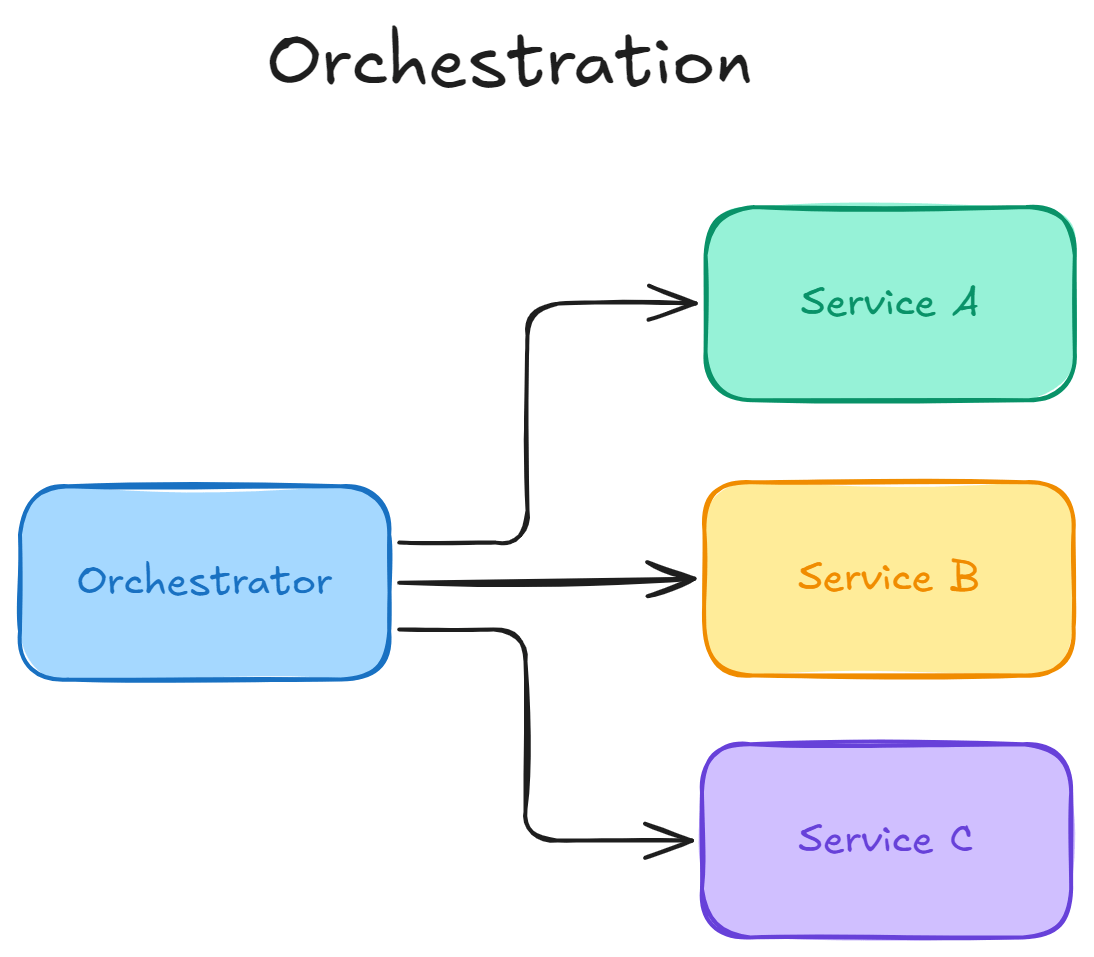Introduction
In distributed systems, it’s common for workflows to span multiple microservices. For example, a travel application might need to coordinate work across an airline service, hotel service, and car rental service.
Two common methods for architecting such workflows are Orchestration and Choreography. In this article, we will discuss both approaches and their respective tradeoffs.
Orchestration
Overview
As the name suggests, Orchestration involves a central orchestrator responsible for coordinating work across all microservices. The orchestrator defines and controls the sequence of service calls, making it easier to manage and modify the business logic.

Pros
- ✔️ Business logic is centralized, making it easier to maintain and modify.
- ✔️ Clear control flow, which simplifies troubleshooting and debugging.
Cons
- ❌ The orchestrator can become a single point of failure, introducing a risk to system availability.
- ❌ Scalability can be challenging, as the orchestrator might become a bottleneck if not designed properly.
Choreography
Overview
In a Choreography-based approach, there’s no central controller. Instead, microservices communicate with each other by emitting and responding to events, creating a decentralized flow of operations.

This approach is often implemented using event-driven architectures with message brokers like Kafka or RabbitMQ.
For more details on messaging, check out my article on asynchronous messaging.
Pros
- ✔️ No single point of failure, as services operate independently based on events.
- ✔️ Loose coupling, meaning services are more autonomous, improving system flexibility and scalability.
Cons
- ❌ Business logic becomes scattered across multiple services, making it harder to understand and manage.
- ❌ Debugging and troubleshooting are more difficult, as issues must be traced across several services.
Conclusion
Both Orchestration and Choreography have their place in designing microservice workflows. Orchestration offers centralized control and is easier to debug, but it comes with a risk of a single point of failure. Choreography, while offering better fault tolerance and scalability, scatters business logic, making debugging more complex.
When choosing between these approaches, consider the tradeoffs based on your system's specific requirements:
- Use Orchestration when clear, centralized control and ease of troubleshooting are priorities.
- Opt for Choreography if you're aiming for high scalability, loose coupling, and resilience to failure.
Each approach brings unique strengths and weaknesses, so it's essential to align the design with your business and technical goals.


